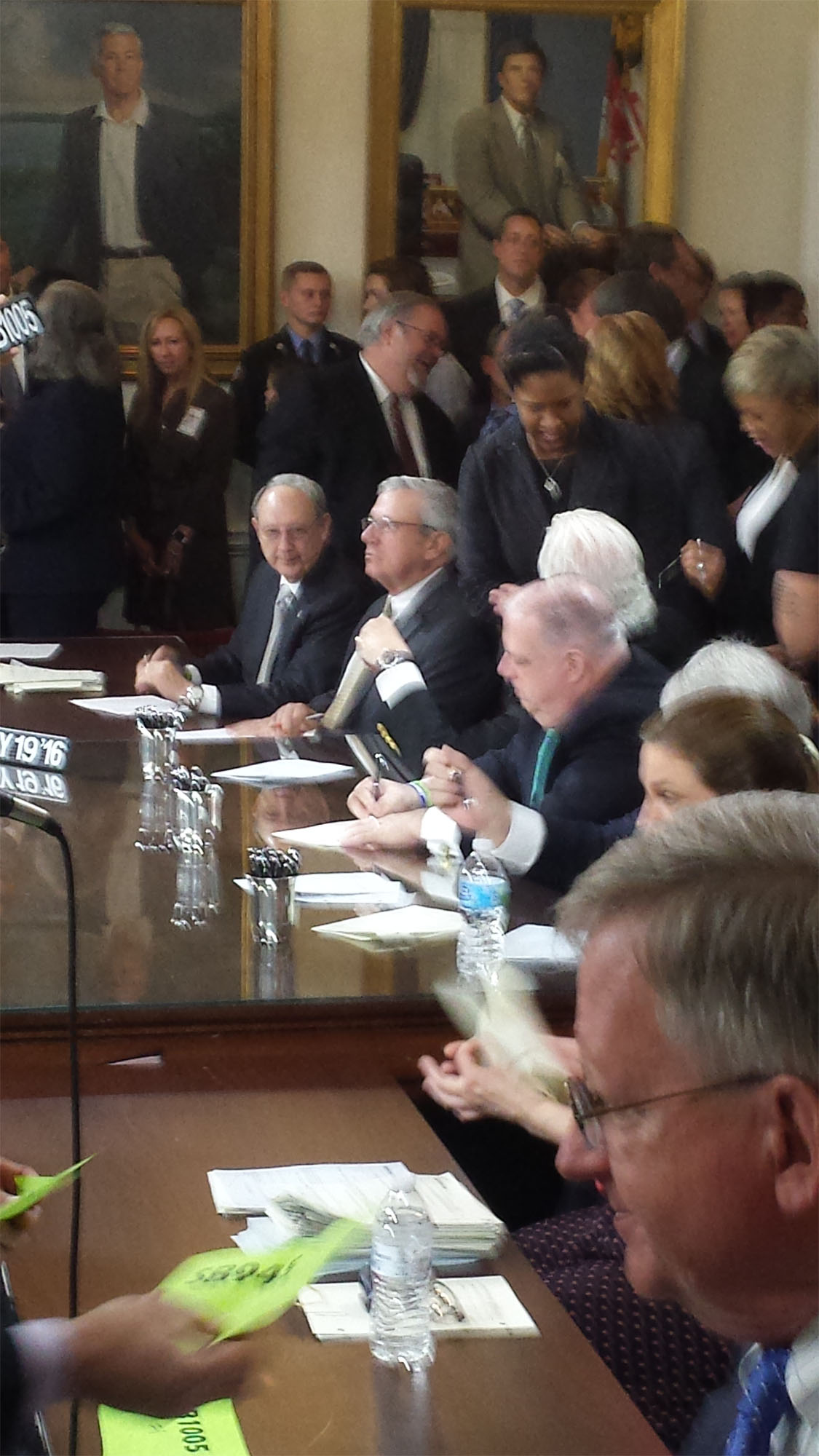Maryland Justice Reinvestment Act

Governor Hogan signs the Justice Reinvestment Act into law.
The Justice Reinvestment Act of 2016 (JRA) was passed finally by both houses of the Maryland General Assembly, effective 4/6/16. Governor Larry Hogan has signed the JRA bill into law on May 19, 2016. This link to SB 1005 includes the full text of the JRA bill as passed. Other links point to specific subject areas within the 204-page bill.
The JRA seeks to reduce Maryland’s prison population and use the savings to provide for more effective treatment to offenders, before, during, and after incarceration. This is intended to reduce the likelihood of reoffending, as well as to benefit victims and families. The JRA bill’s subjects include:
TAXPAYER SAVINGS / REDUCTIONS IN INCARCERATION
A) reduction of maximum incarceration for numerous nonviolent offenses, plus preference for treatment over incarceration of drug offenders (pages #136-163);
B) presumption that technical violations of parole and probation will get prompt attention and specified brief limits to incarceration, unless more is required to protect public or a victim (pages #108-109,114-115,127-131, 171-175 ) ;
C) elimination of delays in administrative parole for nonviolent offenders (pages #120-123);
D) presumption that debilitated & incapacitated inmates may be paroled, absent Governor’s veto for those serving life sentences (pages #124-127);
E) reduction of parole & probation supervision level for ex-offenders with good record of compliance (pages #111-113).
F) retroactive modification of mandatory sentences may be applied for, subject to court hearing, State and victim objections (pages #127-131, 145-146, 172-175).
EX-OFFENDERS’ TREATMENT / ASSISTANCE TO AVOID NEW OFFENSES
G) risk-needs assessments (RNA) identify offender’s needs / risks to reoffend as basis for individualized treatment (pages #104-105, 108-111);
H) ex-offenders rewarded for cooperation with treatment plans via earlier release, reduced supervision requirements, and “certificates of rehabilitation” (pages #116-118);
I) expungement after 10 years of good behavior is permitted for misdemeanors, subject to listed exceptions (pages #176-179);
J) “up to 50%” of prison-reduction savings shall be placed in “Performance Incentive County(PIC) Grant Fund” for local programs such as victim assistance, pretrial improvements, reentry & specialty courts, substance abuse & mental health treatment, (pages 185-186, 195-196) and
K) state and local boards are established to oversee best distribution of grant funds (pages #197-198).
VICTIM ASSISTANCE / OTHER / FUTURE CONCERNS
L) victims will receive increased percentage of inmate earnings and more effective restitution collection (pages #132-133, 180-181, 203-204);
M) victims’ rights to notice, participation and objection to parole & expungement are preserved (pages #118–131,176-179);
N) violent offense maximum penalties are increased to 40 years for second degree murder and to life imprisonment for child abuse if victim under age 13 dies or if offender had prior similar offense (page # 135-136); and
O) future recommendations planned for treatment gaps, mediation in criminal matters, sentencing guidelines for alternatives to incarceration, and reimbursement for local correction centers ( pages #200-201, 204).
IMPLEMENTATION
P) most substantive & procedural provisions (pages 104-186 and 198-200) have a delayed effective date of 10/1/17, but requirements for continued research and recommendations (pages 200–204) as to restitution collection, unmet treatment needs, criminal mediation, sentencing guidelines for alternatives to incarceration, and reimbursement / funding for local detention centers all take effect 10/1/16.
Click here to see each section of the Act
For more information about the history of this legislation see complete information about the Maryland Justice Reinvestment Coordinating Council.
















